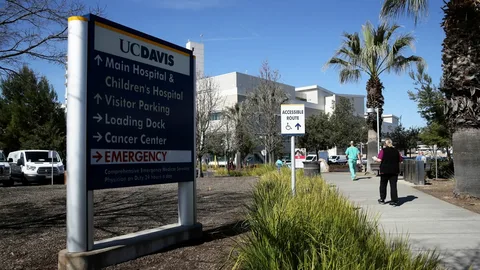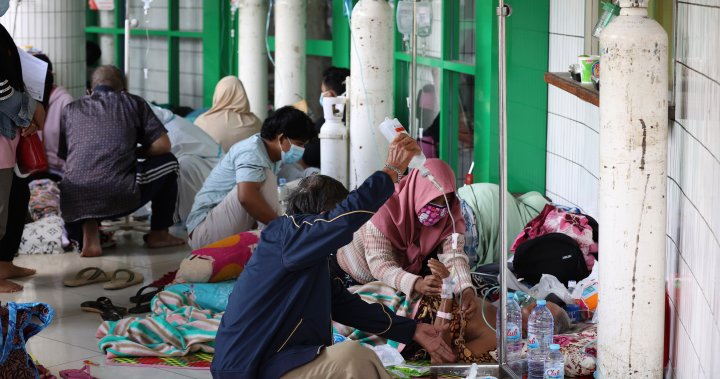A California medical facility is trying to contact about 300 people who were possibly exposed to measles after a child was treated for the contagious viral illness at a California hospital in Sacramento last week, officials said.
Table of Contents
The child had returned from international travel and was evaluated March 5 at UC Davis Health’s emergency department between 12 p.m. and 5 p.m. PT., Sacramento County officials said in a news release.
The hospital said it “has the situation under control” and noted it began contacting about 300 in the facility who may have been exposed. It said, “There are no additional potential exposures at UC Davis Medical Center beyond those people who have been identified and contacted.”

“UC Davis has a record of each patient and employee in the Emergency Department that day, and notifications about potential exposure are being sent through phone calls, the electronic medical record’s online messaging portal, letters, in person, and to the care teams of patients who were admitted from the Emergency Department during the time period,” hospital officials said in a news release.
Those who are unvaccinated against measles, or those with unknown vaccination status who were at UC Davis Medical Center’s emergency department during that time, are at risk of developing measles between seven to 21 days after exposure, Sacramento County public health officials said.
People who were at risk were asked to review their immunization records, contact their health provider and monitor themselves for illness.
“Those who are at risk of exposure are being contacted by Infection Prevention, and care teams who are managing current inpatients are being advised of the need for proper infection prevention processes,” the news release read.
The child was first seen at San Joaquin Urgent Care in El Dorado County, where “a small number of residents” may have been among those exposed, officials there indicated in a separate news release.
Measles is a highly contagious disease that can lead to complications and turn deadly, according to the US Centers for Disease Control and Prevention.
Measles often begins with a mild to moderate fever, along with a cough, runny nose, and red/watery eyes, health officials detailed. Some patients also report diarrhea, nausea and vomiting. Generally, a red, blotchy rash appears first on the face and rapidly spreads to the chest, back, thighs and feet.
It is spread through the respiratory route and can live in the air for up to an hour where an infectious person coughed or sneezed, officials said.
A total of 45 measles cases have been reported in 17 states since the beginning of the year, according to the CDC.
In 2023, the total number of cases recorded was 58.
Rising cases has experts concerned In California hospital
Public health experts are concerned about the increasing number of cases this year.

“Measles was declared eliminated in the United States in 2000 but is still the most easily transmitted human virus presently in circulation,” Dr. Marcus Plescia, chief medical officer of ASTHO, said in a statement last month. “Thankfully, by following established public health principles, Americans can make informed decisions, prevent outbreaks, and protect our communities. Vaccination is the best and safest way to protect children.”
The increase in measles cases is due in part to falling vaccination rates and increased travel, which can result in unvaccinated people acquiring measles abroad and bringing it back to the US, according to the CDC.
Experts recommend children get the measles, mumps and rubella or MMR vaccine in two doses: the first between 12 months and 15 months of age, and the second between 4 and 6 years old. One dose is about 93% effective at preventing measles infection; two doses are about 97% effective.
Nationwide, about 92% of US children have gotten the MMR vaccine by age 2, according to a 2023 report from the CDC – below the federal target of 95%.
The percentage of kindergartners who got their state-required vaccines for measles also remained below the federal target for the 2022-23 school year, according to CDC data. And the rate of vaccine exemptions for children has reached the highest level ever reported in the US.
CNN’s Nadia Kounang, Steve Almasy and Mira Cheng contributed to this report.
For more CNN news and newsletters create an account at CNN.com




